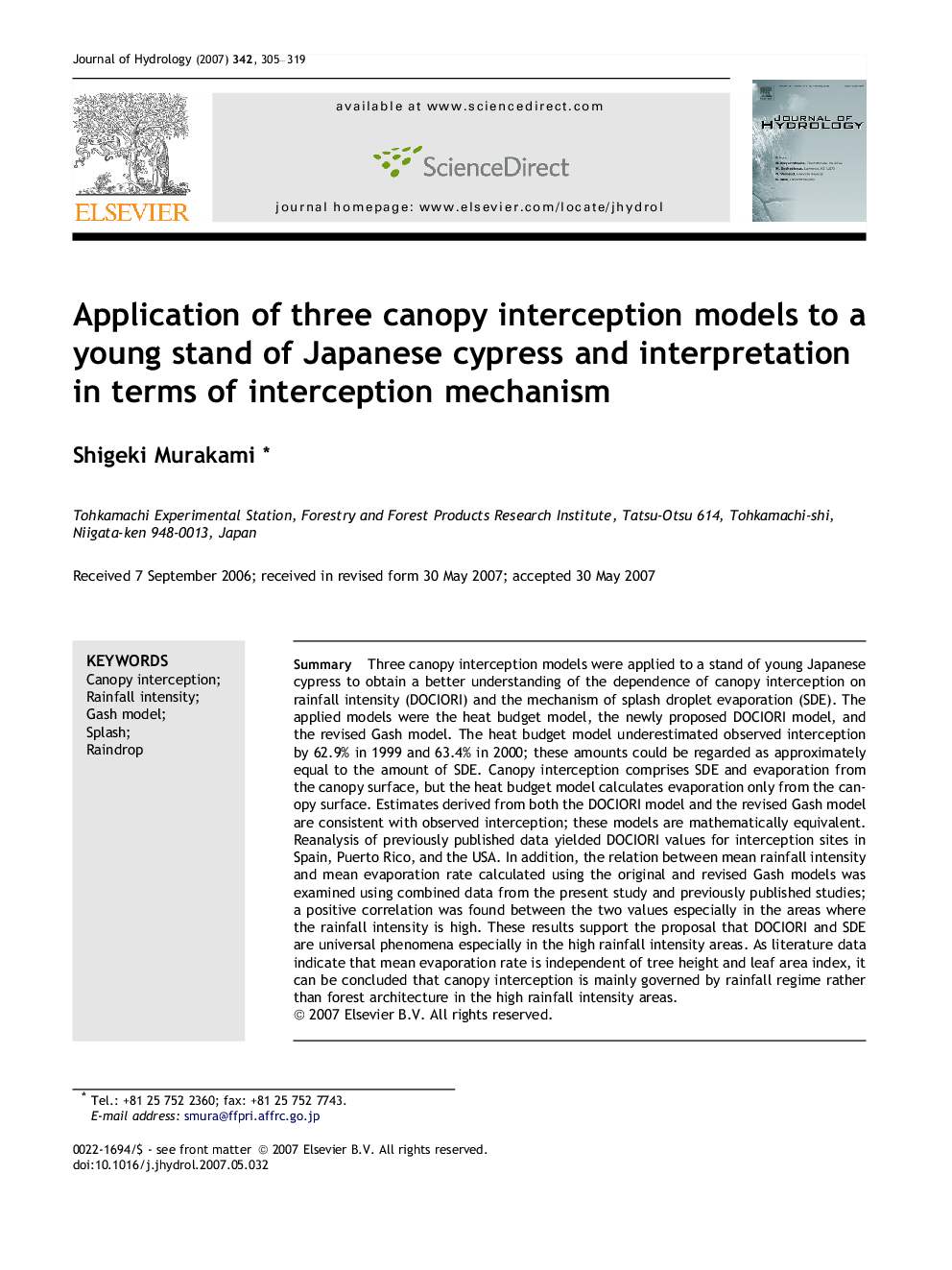| Article ID | Journal | Published Year | Pages | File Type |
|---|---|---|---|---|
| 4579783 | Journal of Hydrology | 2007 | 15 Pages |
SummaryThree canopy interception models were applied to a stand of young Japanese cypress to obtain a better understanding of the dependence of canopy interception on rainfall intensity (DOCIORI) and the mechanism of splash droplet evaporation (SDE). The applied models were the heat budget model, the newly proposed DOCIORI model, and the revised Gash model. The heat budget model underestimated observed interception by 62.9% in 1999 and 63.4% in 2000; these amounts could be regarded as approximately equal to the amount of SDE. Canopy interception comprises SDE and evaporation from the canopy surface, but the heat budget model calculates evaporation only from the canopy surface. Estimates derived from both the DOCIORI model and the revised Gash model are consistent with observed interception; these models are mathematically equivalent. Reanalysis of previously published data yielded DOCIORI values for interception sites in Spain, Puerto Rico, and the USA. In addition, the relation between mean rainfall intensity and mean evaporation rate calculated using the original and revised Gash models was examined using combined data from the present study and previously published studies; a positive correlation was found between the two values especially in the areas where the rainfall intensity is high. These results support the proposal that DOCIORI and SDE are universal phenomena especially in the high rainfall intensity areas. As literature data indicate that mean evaporation rate is independent of tree height and leaf area index, it can be concluded that canopy interception is mainly governed by rainfall regime rather than forest architecture in the high rainfall intensity areas.
